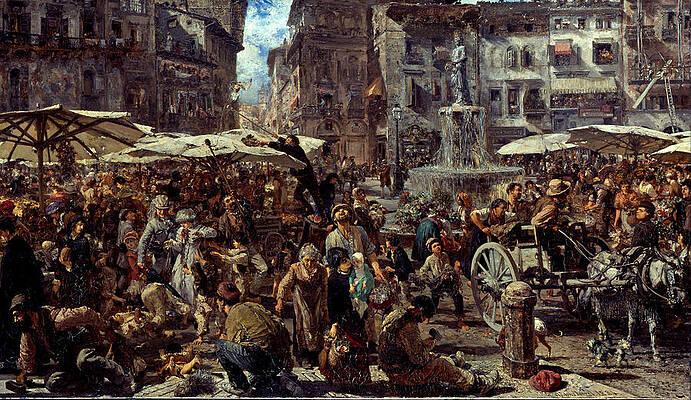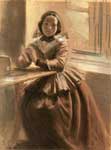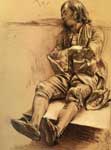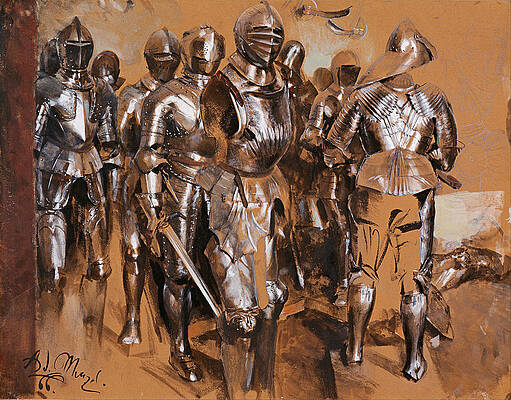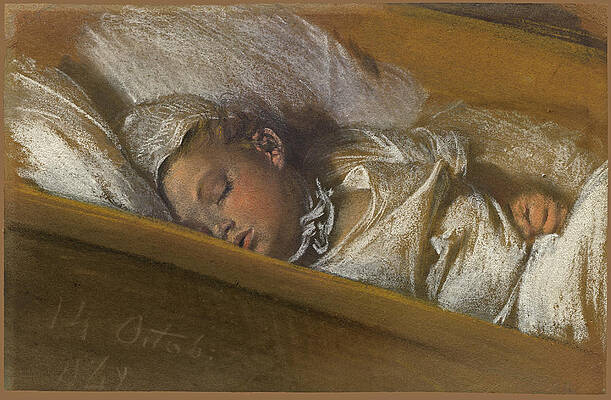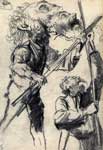Adolph Friedrich Erdmann von Menzel
Paintings
Flute Concert with Frederick the Great in Sanssouci
The Dinner at the Ball
Piazza d'Erbe in Verona
The Berlin-Potsdam Railway
Upturned Teapot
In a Railway Carriage after a Nights Journey
Afternoon in the Tuileries Gardens
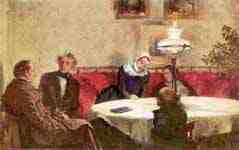
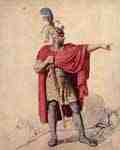
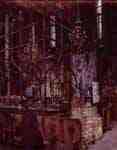

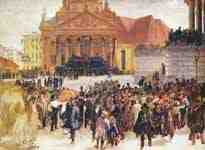
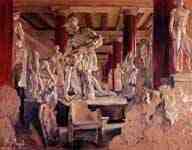
Storage room during the museum renovation
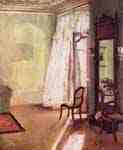
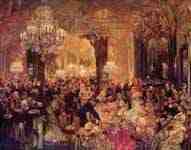
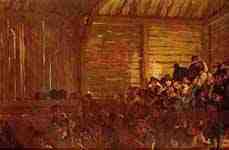
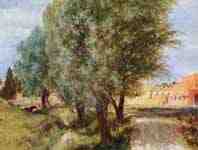
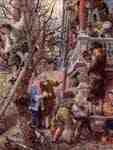
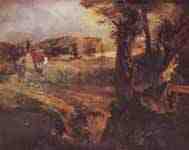

Berlin, Askanischer place after a torchlight

Berlin, Friedrichsgracht by moonlight
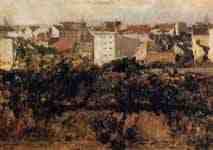
Berlin, Friedrichstadt, Hinterhäuser in the Knight Street ( " view at Hinterhäuser " )
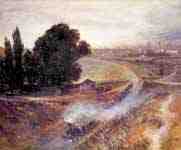
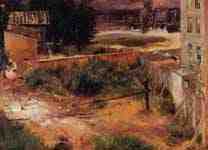
Berlin , Southern Friedrichstadt, backyard Zimmerstraße
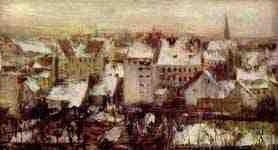
Berlin back houses in the snow
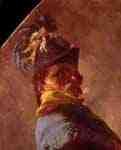
Blücher and Wellington at Belle Alliance , detail
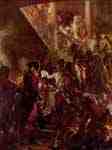
Bonsoir , Messieurs ! ( Frederick the Great in Lissa )

Chodowiecke on the Jannowitzbruecke

Choir of the old monastery church in Berlin

Iron Rolling Mill ( Modern Cyclopes )
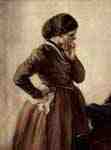
Emilie Menzel standing at the piano
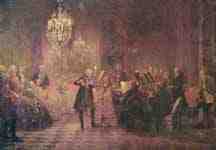
Flute Concert of Frederick the Great in Sanssouci
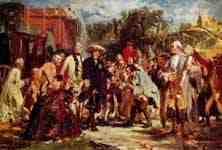

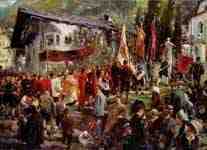
Corpus Christi Procession in Hofgastein
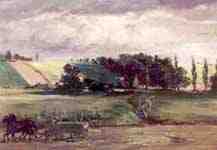
Thunderstorm at Tempelhof Mountain
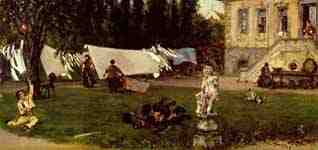
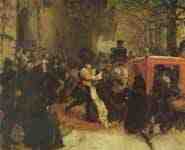
Hanau , castle portal with Royal reception
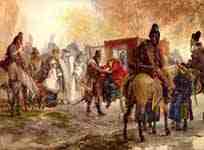
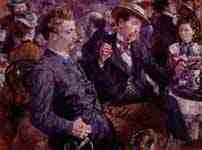
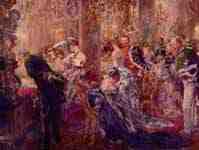

Pulpit sermon in the parish church in Innsbruck


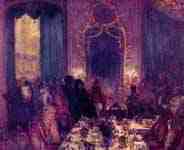
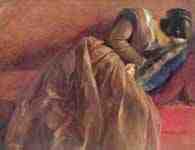
Menzel's sister Emilie in sleep
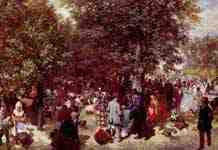
Afternoon in the Tuileries Gardens
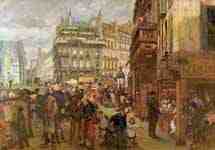
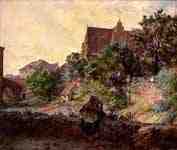
Peter and Paul Church in Striegau
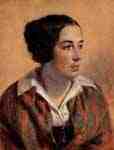

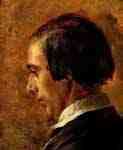
Portrait of Menzel's brother Richard

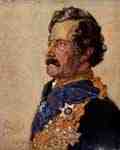
Minister of State Freiherr von Schleinitz
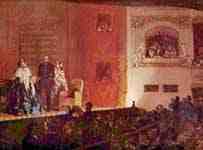

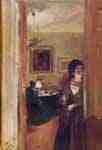
Living room with the sister of the artist
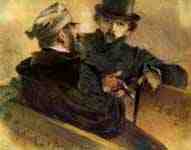
Two primary voters in conversation
Emilie, the Sister of Menzel
Sleeping man
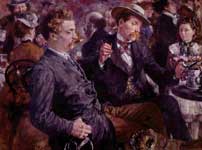
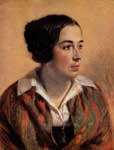
Drawings
Richard Menzel Posing in Eighteenth-Century Costume
Head of a Young Woman Seen from Below
Bust of a Woman, Seen from Behind
Armor Chamber Fantasy
Head of a Woman. Downward Gaze
Japanese Artist at Work
Studies of Figures in Profile
Essay on Stone with Brush and Scraper, Portrait of Moliere
An Infant Asleep in His Crib

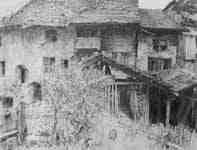
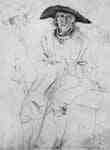
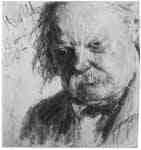
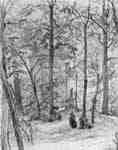

Workers , holding a a bucket up
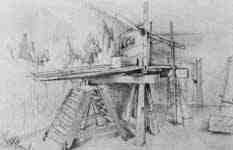
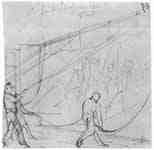
Studio in Kassel , Removal of a carton
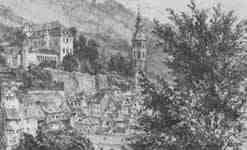
Baden -Baden , castle with a bell tower


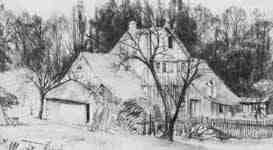
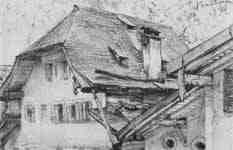
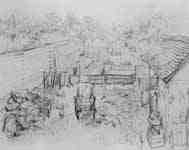


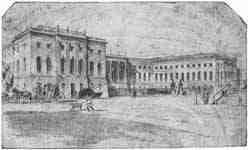
Berlin , Prince Heinrich Palace (now Humboldt University )



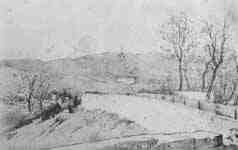

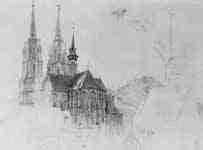
Look at the Elisabeth Church in Marburg from north

View of a castle and town (Baden- Baden)
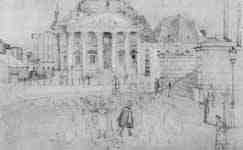
Views of Gendarmenmarkt in Berlin
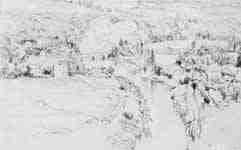
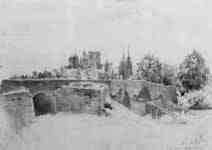



View from the castle in Nuremberg at the Dürer-Haus

Fountain at the fish market in Regensburg
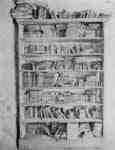


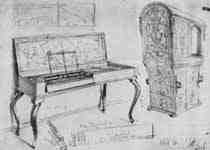

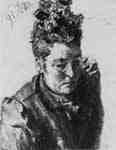
Lady with flowered hat , from above

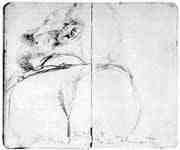
The painter Ernest Meissonier in "Henri - Quatre "
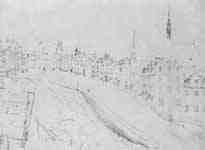
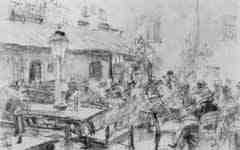
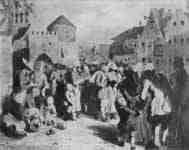
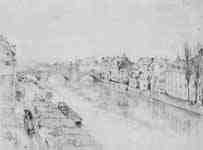


The Saale at Kosen with the Rudelsburg
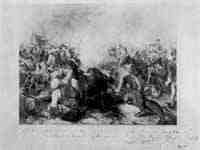
The Battle of Mollwitzstraße , 1741
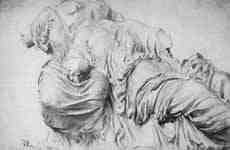


Village on a river, near Kassel

Rural landscape ( Interlaken )
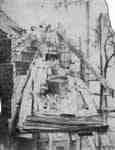
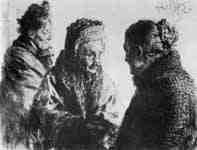
Three old women , wrapped in towels

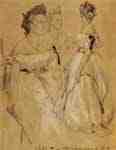


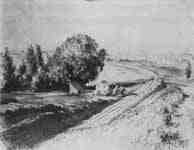
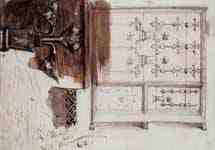
Ironwork from the Welfenmuseum

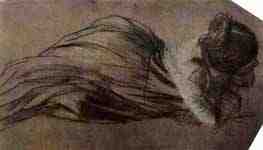

Ferry with reading lady on one bank

Rocks in the Saxon Switzerland
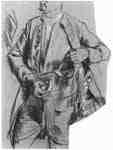
Figure Study on Hans Karl von Winterfeldt

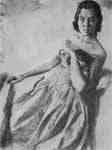
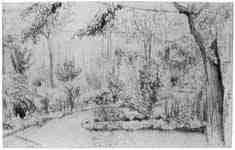
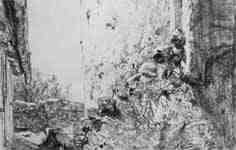
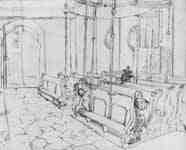

Tomb of Count Henry I in the Elizabeth Church in Marburg

Tomb of the Landgrave Ludwig I. Elisabeth Church in Marburg

Tomb of the Landgrave Ludwig I. Elisabeth Church in Marburg

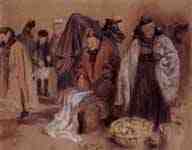
Hessian peasants on the market

A hollow willow tree on the road
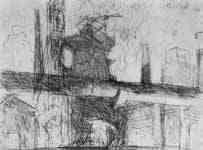
Smelter blast furnace and piping
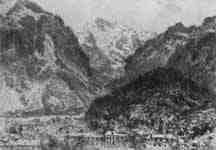
Interlaken with views of the Jungfrau

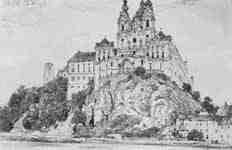
Monastery of Melk on the Danube

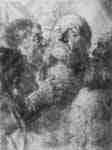

Heads of a lady and a gentleman
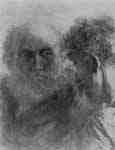
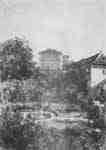

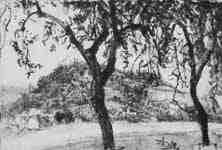
Landscape with village on mountainside , in the foreground two trees


Lute player from the Kassel Gallery
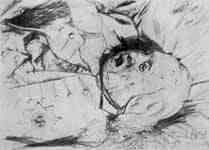

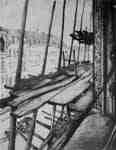

Military transport train on the railway
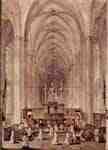
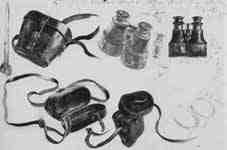






Horse with blanket at the manger in the stable






Portrait of Constanze Martini as a child



Portrait of the Artist's Sister
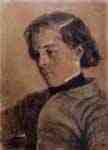
Portrait of Carl Johann Arnold
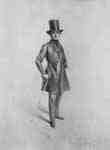
Portrait of the painter Eduard Magnus


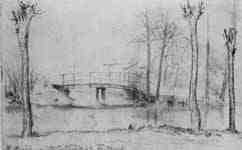
Schafgraben with wooden bridge and houses
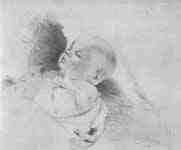
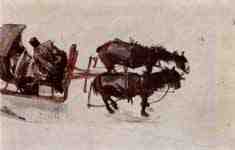
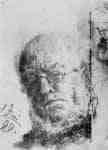


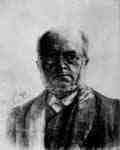
Self Portrait with his coat and waistcoat
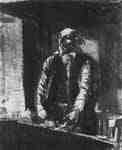

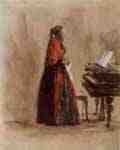

Seated Lady with Opera Glasses

Seated peasant farmers and two

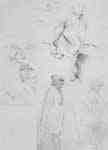
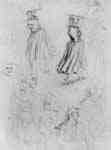

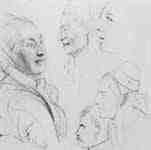
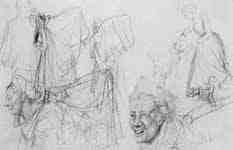

Sketch sheet with plants and insects
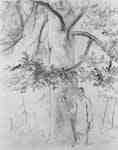


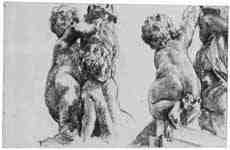
Study after Baroque putti sculptures

Study on " Frederick encounter with Emperor Joseph II "
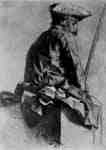
Study on " Frederick II traveling "


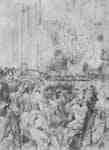
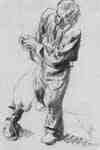

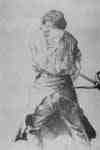
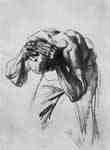

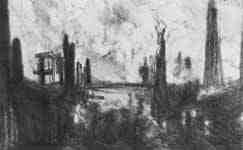
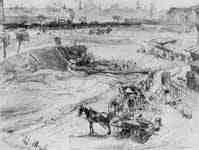



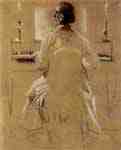

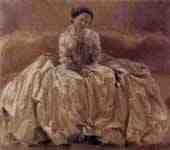

Study on the " coronation picture Wilhelm I. "
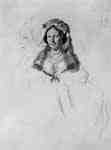
Study on the " coronation picture Wilhelm I. "
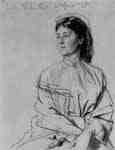
Study on the " coronation picture Wilhelm I. "
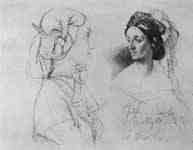
Study on the " coronation picture Wilhelm I. "

Study on the " coronation picture Wilhelm I. "
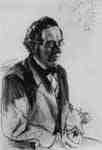
Study on the " coronation picture Wilhelm I. "
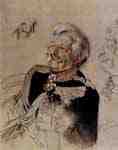
Study on the " coronation picture Wilhelm I. "
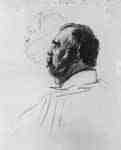
Study on the " coronation picture Wilhelm I. "
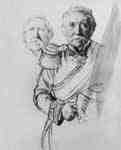
Study on the " coronation picture Wilhelm I. "
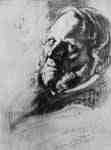
Study on the " coronation picture Wilhelm I. "
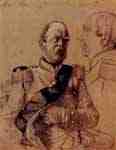
Study on the " coronation picture Wilhelm I. "
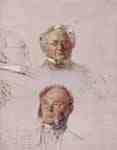
Study on the " coronation picture Wilhelm I. "

Study on the " coronation picture Wilhelm I. "
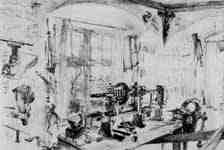
Study on the " coronation picture Wilhelm I. "
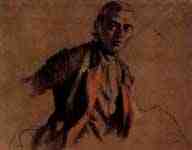
Study on " Frederick II Round Table "
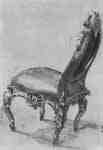
Study on " Frederick II Round Table "
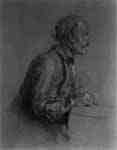
Study on " Frederick II Round Table "

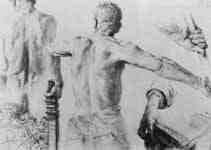


Study sheets for "Paris of the week "

Towers of the Church of St. Elizabeth in Marburg
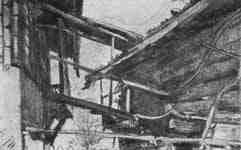
Connecting bridge between two farmhouses
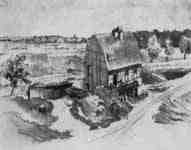
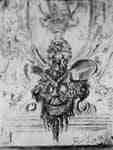
Wall decoration in the castle Pommersfelden

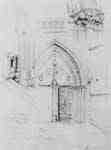
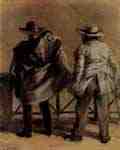
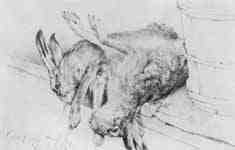
Study of a male, three views
Adolph Friedrich Erdmann von Menzel : Illustrations
Fine Art Prints | Greeting Cards | Phone Cases | Lifestyle | Face Masks | Men's , Women' Apparel | Home Decor | jigsaw puzzles | Notebooks | Tapestries | ...
Adolph Friedrich Erdmann von Menzel (December 8, 1815 – February 9, 1905) was a German artist noted for drawings, etchings, and paintings. Along with Caspar David Friedrich, he is considered one of the two most prominent German artists of the 19th century,[1] and was the most successful artist of his era in Germany.[2]
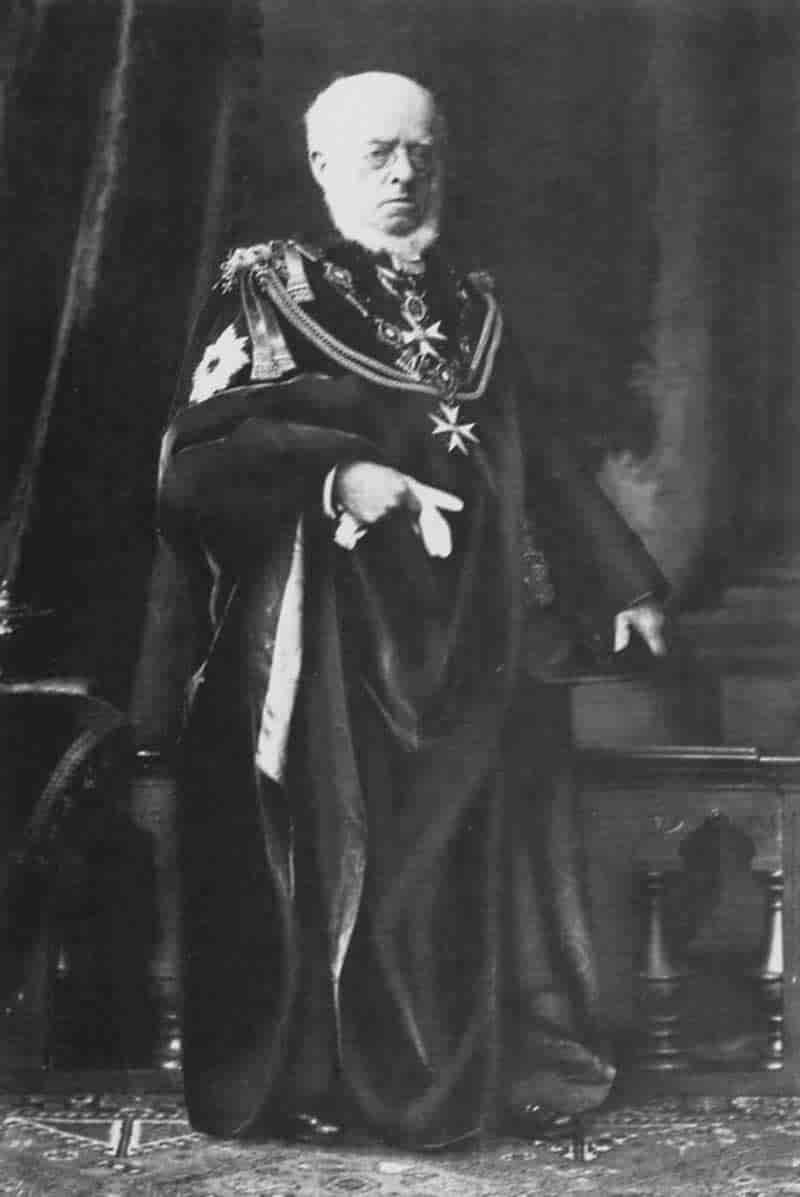
His popularity in his native country, owing especially to politically propagandistic works, was such that few of his major paintings left Germany, as many were quickly acquired by museums in Berlin.[3] Menzel's graphic works and drawings were more widely disseminated; these, along with informal paintings not initially intended for display, have largely accounted for his posthumous reputation.[2]
Although he traveled in order to find subjects for his art, to visit exhibitions, and to meet with other artists, Menzel spent most of his life in Berlin, and was, despite numerous friendships, by his own admission detached from others.[4] It is likely that he felt socially estranged for physical reasons alone—Menzel had a large head, and stood about four foot six inches.[4]
Berlin
Career
He was born in Breslau. His father was a lithographer and intended to educate his son as a professor; however, he would not thwart his taste for art. After resigning his teaching post, Menzel senior set up a lithographic workshop in 1818. In 1830 the family moved to Berlin, and in 1832 Adolph was forced to take over the lithographic business on the death of his father. In 1833, he studied briefly at the Berlin Academy of Art, where he drew from plaster casts and ancient sculptures; thereafter Menzel was self-taught.[4] Louis Friedrich Sachse (de) of Berlin published his first work in 1833, an album of pen-and-ink drawings reproduced on stone, to illustrate Goethe's little poem, Kunstlers Erdenwallen. He executed lithographs in the same manner to illustrate Denkwürdigkeiten aus der brandenburgisch-preussischen Geschichte; The Five Senses and The Prayer, as well as diplomas for various corporations and societies.
Emilie Menzel Asleep, c. 1848. Oil on paper, 46.8 x 60 cm. Hamburger Kunsthalle.
From 1839 to 1842, he produced 400 drawings, largely introducing to Germany the technique of wood engraving, to illustrate the Geschichte Friedrichs des Grossen (History of Frederick the Great) by Franz Kugler. He subsequently brought out Friedrichs der Grossen Armee in ihrer Uniformirung (The Uniforms of the Army under Frederick the Great), Soldaten Friedrichs der Grossen (The Soldiers of Frederick the Great); and finally, by order of King Frederick William IV, he illustrated the works of Frederick the Great, Illustrationen zu den Werken Friedrichs des Grossen (1843-1849).
Through these works, Menzel established his claim to be considered one of the first, if not actually the first, of the illustrators of his day in his own line.
Balcony Room, 1845.
In the meantime, Menzel had also begun to study, unaided, the art of painting, and he soon produced a great number and variety of pictures. His paintings consistently demonstrated keen observation and honest workmanship in subjects dealing with the life and achievements of Frederick the Great, and scenes of everyday life, such as In the Tuileries, The Ball Supper, and At Confession. Among those considered most important of these works are Iron Rolling Mill (1872-1875) and The Market-place at Verona. When invited to paint The Coronation of William I at Koenigsberg, he produced an exact representation of the ceremony without regard to the traditions of official painting.
Menzel's depictions of Frederick the Great were nearly cinematic in their reportage and attention to detail, glorifying a suppressive government in a pseudo-documentary style; in these qualities as well as for their re-creation of earlier events of nationalistic pride, the paintings are very similar in effect to the Napoleonic heroics chronicled by Ernest Meissonnier (1815-1891).[2] During Menzel's life, his paintings' political implications were appreciated by Otto von Bismarck and William I, and after his death they were appropriated for use as electoral posters by Adolf Hitler.[2]
If these historical illustrations anticipated the literal qualities of early Impressionism,[5] it is paintings such as The French Window and The Palace Garden of Prince Albert, both painted in the mid- 1840s, that now appeal as "among the most freely observed of mid-nineteenth century images."[6] Such genre paintings evidence associations with French and English art, and would have been politically unacceptable in Wilhelmine Germany; they were not exhibited in Menzel's lifetime.[6] Private drawings and watercolors made of dead and dying soldiers in 1866 on the battlefields of the Austro-Prussian War are unsparing in their realism, and have been described by art historian Marie Ursula Riemann-Reyher as "unique in German art of the time."[7]
Later years
Studio Wall, 1872.
The paintings which were available to the public garnered recognition not only within Germany, but from the French avant-garde as well: Edgar Degas admired and copied his work, calling him "the greatest living master",[8] and Louis Edmond Duranty wrote of his art:
"In a word, the man is everywhere independent, sincere, with sure vision, a decisive note that can sometimes be a little brutal....While being perfectly healthy he has the neurosis of truthfulness....The man who has measured with a compass the buttons on a uniform from the time of Frederick, when it is a matter of depicting a modern shoe, waistcoat, or coiffure, does not make them by approximations but totally, in their absolute form and without smallness of means. He puts there everything that is called for by the character (of the object). Free, large, and rapid in his drawing, no draftsman is as definitive as he".[9]
Notwithstanding Menzel's professed estrangement from others, his renown entailed social obligations, and in the 1880s the poet Jules Laforgue described him as "no taller than a cuirassier-guard's boot, bedecked with pendants and orders, not missing a single one of these parties, moving among all these personages like a gnome and like the greatest enfant terrible for the chronicler."[10] In Germany he received many honors, and in 1898 became the first painter to be admitted to the Order of the Black Eagle; by virtue of receiving the Order, Menzel was raised to the nobility, becoming "Adolph von Menzel". He was also made a member of the Académie des Beaux-Arts in Paris and the Royal Academy in London. After his death in 1905 in Berlin, his funeral arrangements were directed by the Kaiser, who walked behind his coffin.[11]
Notes
Menzel's tomb in Berlin
Fried, 11
Eisler, 559-563
Eisler, 559
Menzel wrote in his last will and testament: "Not only have I remained unmarried, throughout my life I have also renounced all relations with the other sex....In short, there is a lack of any kind of self-made bond between me and the outside world." Fried, 5
Eisler, 561
Eisler, 564
Asked later why he had not painted any works referring to the war, Menzel replied, in part, "The requirements of patriotism have been covered by others and, after all, is it necessary to paint the horror?! Anno 66 (post festum) I went to Bohemia!..." Keisch, 331
Keisch, et al, front cover flap
Fried, 130
Fried, 9
Fried, 10
References
Public Domain This article incorporates text from a publication now in the public domain: Chisholm, Hugh, ed. (1911). Encyclopædia Britannica (11th ed.). Cambridge University Press.
Eisler, Colin. Masterworks in Berlin: A City's Paintings Reunited. Bulfinch, 1996. ISBN 0-8212-1951-0
Fried, Michael. Menzel's Realism: Art and Embodiment in Nineteenth-Century Berlin. London and New Haven: Yale University Press, 2002. ISBN 0-300-09219-9
Keisch, Claude, et al. Adolph Menzel 1815-1905: Between Romanticism and Impressionism. London and New Haven: Yale University Press, 1996. ISBN 0-300-06954-5
----
Fine Art Prints | Greeting Cards | Phone Cases | Lifestyle | Face Masks | Men's , Women' Apparel | Home Decor | jigsaw puzzles | Notebooks | Tapestries | ...
----
Artist
A - B - C - D - E - F - G - H - I - J - K - L - M -
N - O - P - Q - R - S - T - U - V - W - X - Y - Z
Retrieved from "http://en.wikipedia.org/"
All text is available under the terms of the GNU Free Documentation License




